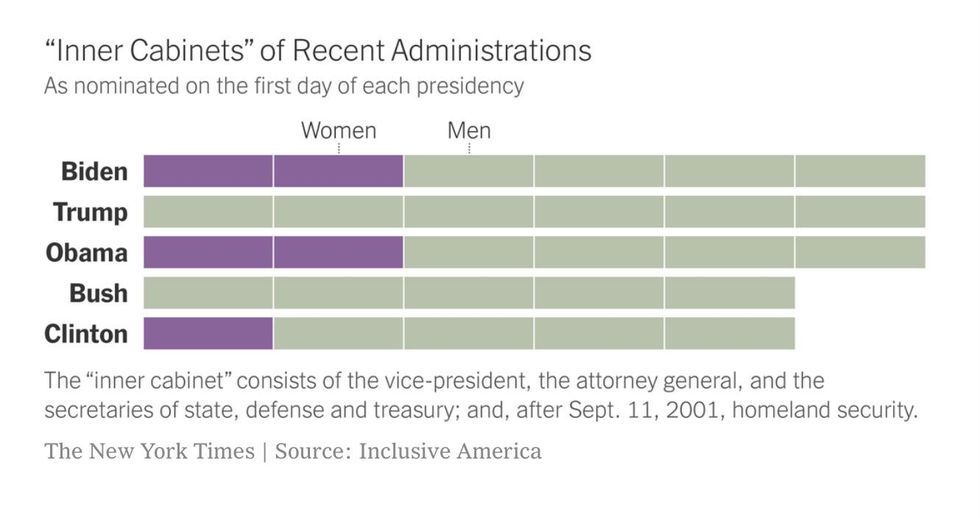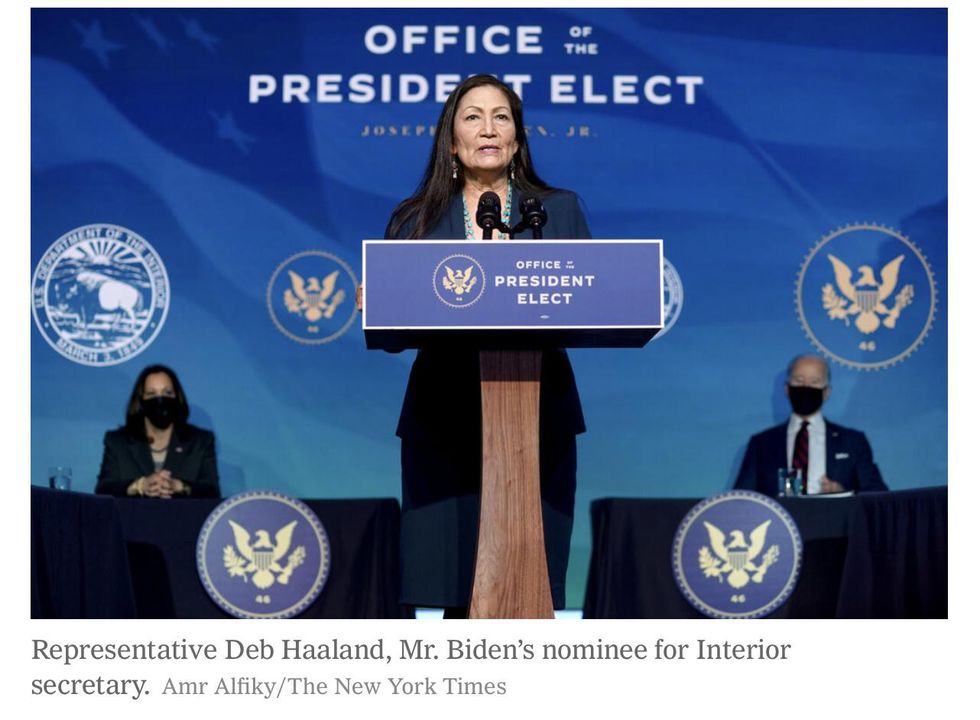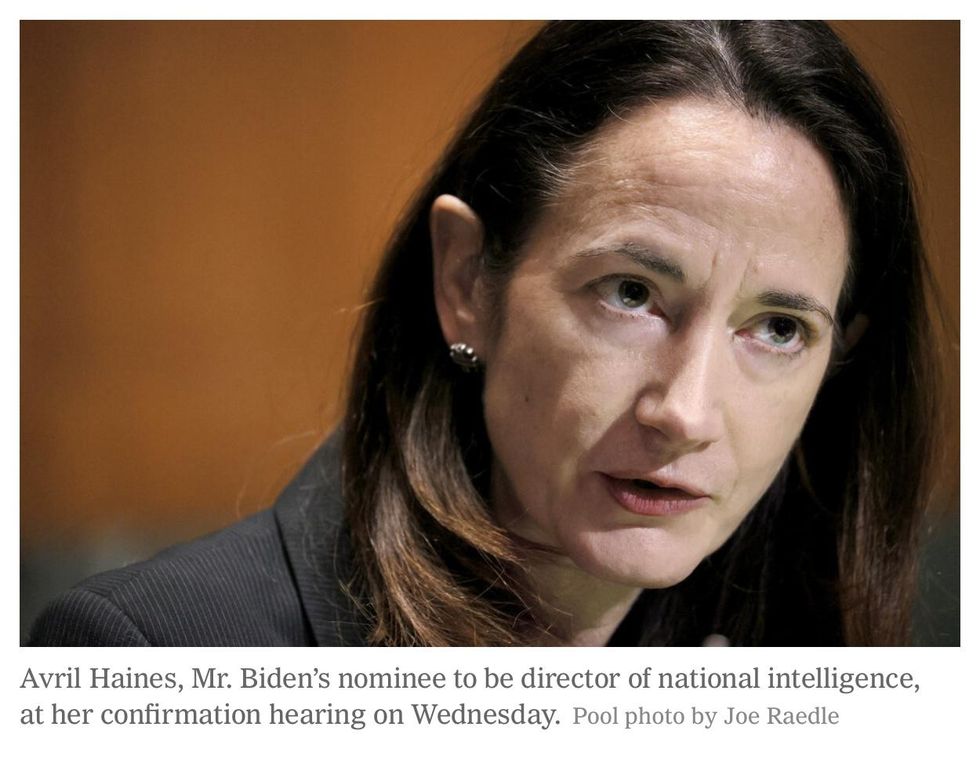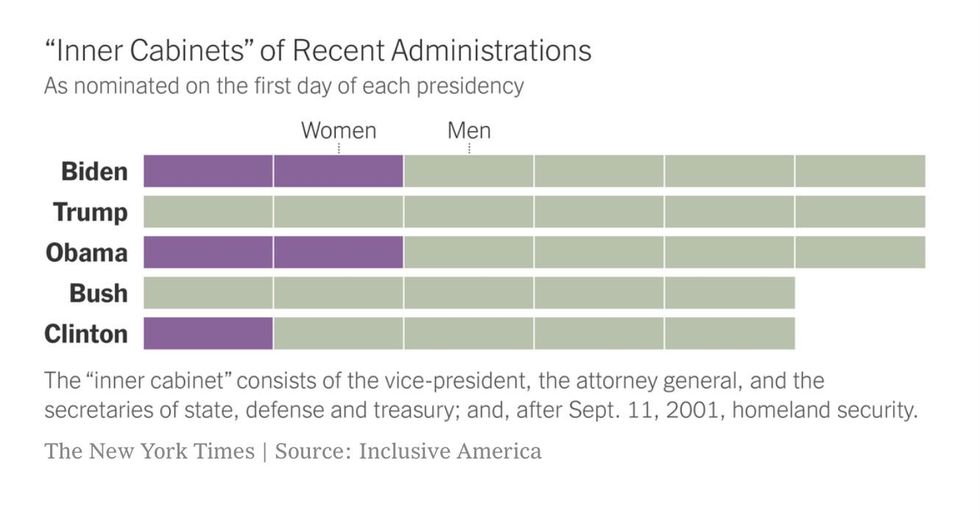A Cabinet That 'Looks Like America.' But Who Does the Talking?
There are more women and people of color in President Biden's proposed cabinet than in the last four administrations, modernizing what has long been a stubbornly white, male institution.
“No matter how you slice and dice the data, whether you're looking at the cabinet or at White House staff, you're going to see the same commitment to diversity."
— Kathryn Dunn Tenpas, senior fellow at the University of Virginia's Miller Center
President Biden's proposed cabinet would be the most diverse in U.S. history, comprising more women and people of color than any cabinet before it — which, in many ways, fulfills Mr. Biden's campaign promise to select a team that "looks like America" and modernizes the predominantly male, white institution.
"Building a diverse team will lead to better outcomes and more effective solutions to address the urgent crises facing our nation," he said in a speech in December when announcing some of his cabinet nominees.
If the Senate confirms Mr. Biden's picks, more than half of his 25-member cabinet will be nonwhite and 48 percent will be female, according to an analysis by the nonprofit group Inclusive America, which tracks diversity in government.
And there will be other notable firsts: In addition to the barrier-breaking Vice President Kamala Harris, there will be America's first female Treasury secretary (Janet Yellen), its first openly gay secretary (Pete Buttigieg, for the Department of Transportation), its first Native American secretary (Deb Haaland, for the Department of the Interior), the first woman to serve as director of national intelligence (Avril Haines) and the first immigrant to lead the Department of Homeland Security (Alejandro Mayorkas), to name just a few.

In positions beyond the cabinet — like senior White House staff members, the newly created Covid-19 Equity Task Force chair or deputy secretaries of departments — the Biden administration is "at parity or better than" the makeup of the overall American population, said Mark Hanis, a co-founder of Inclusive America. Women make up 60 percent of the team beyond the cabinet, and just over 40 percent of that team is nonwhite.
In the last four administrations, cabinets — which can change in size if the president decides to elevate certain positions to cabinet-level — were predominantly white and women made up no more than 33 percent.
"No matter how you slice and dice the data, whether you're looking at the cabinet or at White House staff, you're going to see the same commitment to diversity," said Kathryn Dunn Tenpas, senior fellow at the University of Virginia's Miller Center, which specializes in presidential scholarship.

These levels of diversity are particularly notable when compared with the numbers in Congress. Female representation in both the House and the Senate has been hovering between just under 20 percent and 25 percent since 2015, according to the Center for American Women and Politics, and currently about 20 percent of the lawmakers in both the House and the Senate are Black or Latino.
But checking off a list of diverse candidates is one thing. It is quite another to give diverse candidates a true voice and an opportunity to shape policies, particularly if one of those candidates is the first from a particular group to take up a position.

Within the cabinet, there is a hierarchy of influence based on their department's jurisdiction, Dr. Tenpas explained. Leadership of the military or monetary policy is seen as more influential than, say, education, which has a narrower set of responsibilities.
The five most important cabinet positions, informally known as the "inner cabinet," are the secretaries of state, the Treasury, defense and homeland security (a critical position created in response to the 9/11 attacks) and the attorney general, she said, because of their broad jurisdiction. Traditionally, vice presidents were not given much authority, but that position has grown in stature in recent years and has also become one of the most influential positions in the cabinet, as former Vice Presidents Dick Cheney and Mr. Biden have demonstrated.
The other secretaries in a cabinet represent what is known as "constituency-based" or "clientele-based" departments and are seen as having less influence, Dr. Tenpas added. Often, women and people of color in the cabinet are pigeonholed into those "outer cabinet" roles, like education, veterans affairs or agriculture.

Of course, this is not the first time women have served in the inner cabinet — Madeleine Albright, Condoleezza Rice and Hillary Rodham Clinton all served as secretary of state and Janet Reno and Loretta Lynch as attorney general — but having women as Treasury secretary and vice president changes precedent and shakes up the power dynamics of the president's tight circle.
"Mr. Biden's biggest breakthrough is that he's appointing different people to different jobs," Dr. Tenpas said.
- Jan. 21, 2021
- New York Times
###
January 22, 2021
Voices4America Post Script. A diverse cabinet is a better cabinet. A diverse America is a better America, #ImWithJoe


